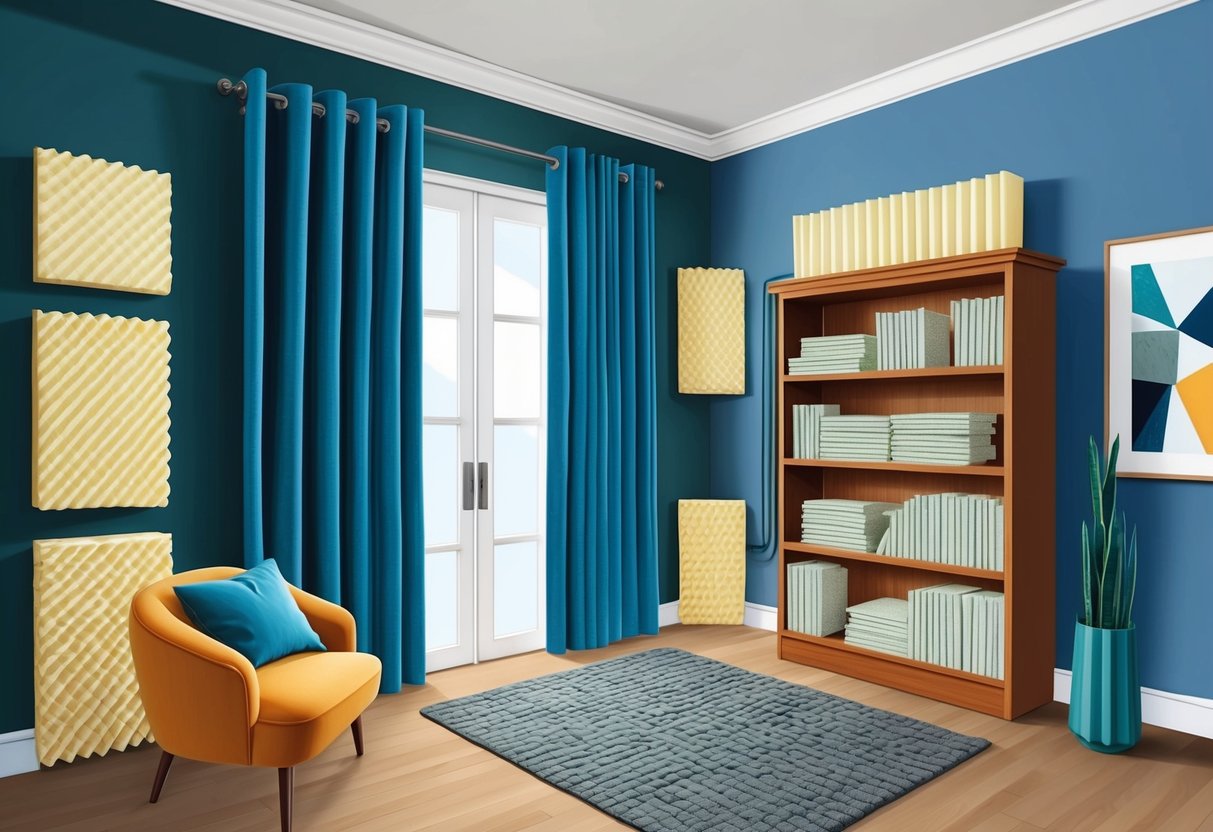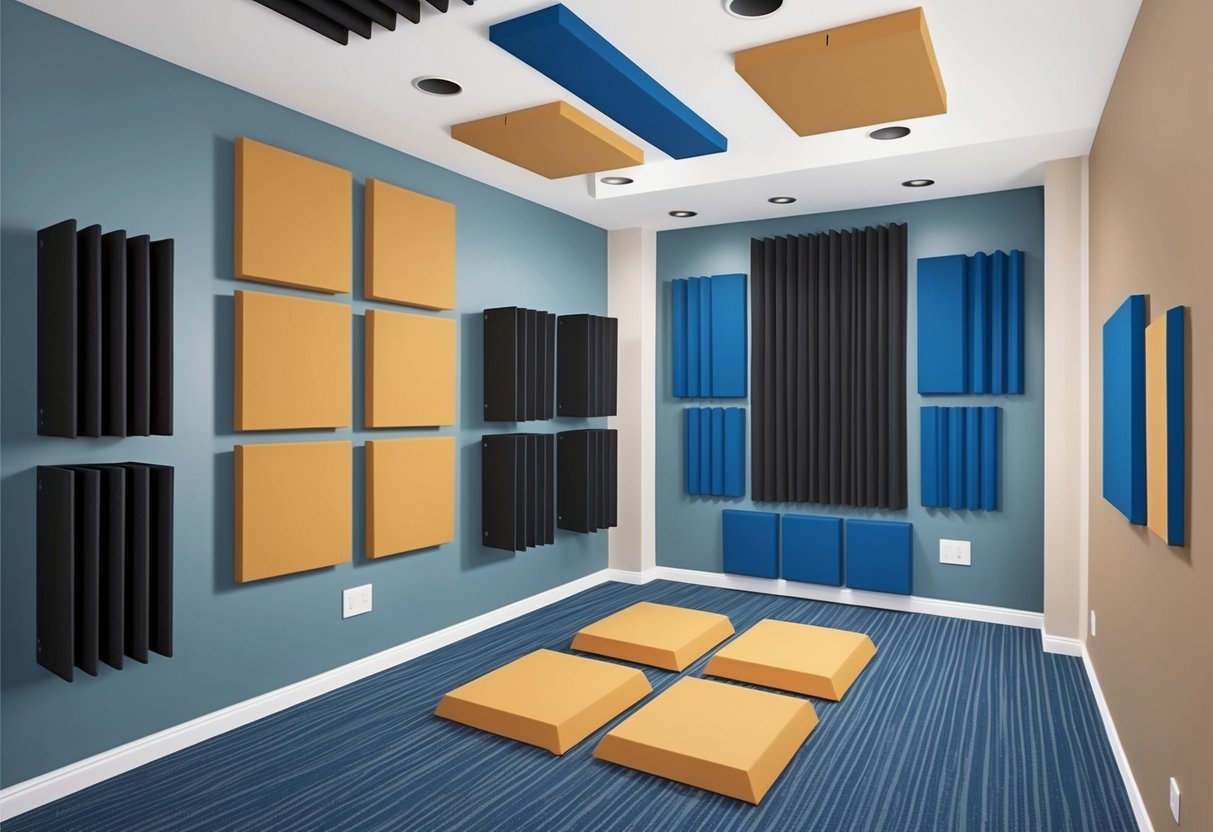
Sealing Gaps with Weatherstripping and Door Seals
Even the best soundproof door will let in noise if there are gaps around the frame. Installing high quality weatherstripping materials and acoustic door seals is one of the simplest and most cost-effective ways to improve sound blocking.
Door perimeter seals compress against the door frame to create a tight, soundproof barrier. Options include adhesive-backed foam, rubber, or silicone strips.
For more advanced solutions, acoustic door seals are specially designed to block airborne noise and are effective on both single and double doors. Acoustical sealant can be applied to any visible cracks or seams around the edges.
Using a combination of weatherstripping, door sweeps, and dedicated door seals can greatly reduce noise leakage from shared hallways or noisy common areas.
Using Draft Stoppers for Sound Blocking
A common source of unwanted sound is the gap beneath a door. Draft stoppers or door sweeps provide an affordable and easy-to-install solution for this issue.
These are typically long foam or fabric barriers placed along the door bottom, preventing both air and sound movement from room to room. Choose a draft stopper that fully covers the width of the door and sits flush with the floor.
Some options, like weighted fabric stoppers or adjustable silicone door sweeps, are specifically made for soundproofing and offer much better performance than standard models. Combining a quality draft stopper with other soundproofing products such as weatherstripping and an acoustic door seal further boosts sound blocking capability.
This simple upgrade is particularly helpful in apartments, offices, or any area with high background noise.
Noise Control for Windows
Windows are a major pathway for noise to enter a room. Addressing sound transmission at the window can significantly improve overall room soundproofing and comfort.
Installing Soundproof Windows and Window Inserts
Soundproof windows use thicker glass panes and air gaps to limit the penetration of outside noise. They are especially effective in busy urban environments or homes near traffic.
Homeowners can replace existing windows with specialized soundproof windows to achieve maximum noise isolation. Alternatively, window inserts offer a more affordable way to boost sound insulation.
These secondary windows are mounted on the inside of the existing window frame, creating an extra barrier without completely replacing the original window. Many people find that soundproof window inserts provide substantial noise dampening, especially for high-frequency sounds like voices and traffic.
For optimal results, inserts should fit tightly and cover as much of the frame as possible.
Key Features of Soundproof Windows and Window Inserts
| Feature | Benefit |
|---|---|
| Thicker Glass | Blocks more noise |
| Air Gaps | Reduces vibration |
| Tight Seals | Prevents sound leaks |
| Easy Installation | Minimal construction |
Using Heavy Curtains and Soundproof Curtains
Heavy curtains can help absorb sound, reducing echoes and minimizing the amount of noise that enters or leaves a room. Thicker, denser curtains block more sound than lightweight materials.
For even better performance, homeowners can install specially designed soundproof curtains containing multiple layers of fabric or noise-reducing materials. To maximize their effect, curtains should extend well past the window frame on all sides, ideally from ceiling to floor.
Installing curtain rods that allow curtains to hang several inches beyond the window’s edges increases coverage and effectiveness. More folds and pleats improve sound absorption.
Combining blackout and soundproof curtains can block both light and noise, creating a calmer environment.
Tips for Maximum Effect:
- Choose curtains that are at least twice as wide as the window.
- Layer multiple panels for better noise absorption.
- Select curtains specifically rated for acoustic control or noise reduction.
Sealing Window Gaps and Cracks
Even small gaps or cracks around a window can let in significant amounts of noise. Using weatherstripping or acoustic sealant to fill gaps is a simple yet effective measure.
Pay careful attention to the areas where the sash meets the window frame, and where the frame meets the wall. Expandable foam tape, silicone sealant, and rubber weatherstripping are common materials for sealing gaps.
Regularly inspect windows for new cracks or worn seals and replace them as needed for lasting noise control. By combining proper sealing with other treatments, such as soundproof window inserts or heavy curtains, a noticeable reduction in outside noise can be achieved.
Common Materials for Sealing:
- Silicone or acrylic caulk
- Foam weatherstripping
- Rubber gasket tape
- Acoustic sealant
A properly sealed window, working in tandem with soundproof glass or thick window treatments, can make a room significantly quieter.
Acoustic Treatments for Enhanced Sound Quality

Improving the acoustic atmosphere in a room involves integrating several specialized materials and techniques. Focusing on absorbing, diffusing, and reducing unwanted sound will help create a quieter, more comfortable environment.
Choosing and Placing Acoustic Panels
Acoustic panels are designed to absorb sound waves and limit echo, making voices and audio clearer. These panels come in several materials, including fabric-wrapped options and specialized sound deadening acoustic panels.
Proper placement is crucial—panels should be installed where sound reflections occur most, such as behind speakers or on walls facing each other. Rooms with hard surfaces like drywall or glass benefit from panels placed on parallel walls to disrupt direct sound paths.
Users should aim for broad coverage without over-cluttering the space. Clustering panels in areas where noise is most problematic, such as near doors or windows, can also help decrease the transmission of outside noise.
For a full guide on effective placement, The Home Depot offers soundproofing advice.